Mobility is changing — it’s electrifying. But not every vehicle is suited for electric propulsion and heavy battery systems. That’s where the rotary exhaust valve (REV) is revolutionary.
The Advanced Power Systems Research Center (APS LABS) at Michigan Technological University is partnering with Strange Development to test the REVolution engine, which uses a rotary exhaust valve to clean up what were previously some of the dirtiest engines on the market.
“Some sectors, especially drone sectors, don’t have any emissions regulations. They’re all two-stroke engines and the problem is that regulation is going to catch up to them,” said John Krzeminski, CEO of Strange Development. “Electrification is great for some applications, but it’s not going to solve all our problems.”
Specifically, Krzeminski and his APS LABS collaborator Jeremy Worm are looking at drones — or rather, unmanned aerial vehicles (UAVs) — and they are not your everyday hobbyist models. The researchers are also investigating range extenders for electric vehicles and utility powersports vehicles like the snowmobile an Inuit hunter might use, the all-terrain vehicle (ATV) a farmer relies on or jet skis like the ones Michigan Tech engineers study at the Lake Superior marine autonomy research site.
MEDC Powers Up Michigan Mobility
The REVolution engine, product innovation by Strange Development and testing at APS LABS has been supported by a PlanetM Mobility Testing Grant through the Michigan Economic Development Corporation (MEDC).
“Michigan has a rich history in mobility development; this is what brought me to Michigan 22 years ago,” Krzeminski said. “The depth of innovative engineering talent in Michigan is why Stange Development is here and MEDC’s support helps us take emerging technologies, like the solutions being developed on our REVolution engine platform, beyond a concept and move these innovations into the marketplace.”
Michigan Tech has three testing sites affiliated with the new Michigan Mobility Funding Platform, recently launched by the Office of Future Mobility and Electrification (OFME), where anyone can apply to receive grant funding for innovative projects that support more sustainable, equitable and multimodal mobility outcomes. The real-world challenges these testing sites seek to address in partnership with MEDC and OFME are often complex, requiring researchers to consider novel approaches.
Grants and Funding
Product innovation by Strange Development and testing at the Advanced Power Systems Laboratories (APS LABS) is supported by the Michigan Economic Development Corporation (MEDC).
“Unfortunately, we simply can’t electrify everything and save the world,” Worm said. “Sure, there are some mobility applications where electrification works really well and results in a reduced environmental impact, but that’s just not the case with all applications. Drones and range-extender electric vehicles that use a combustion engine to supply power once the battery is depleted are just a couple examples.”
Krzeminski added, “Electrification is here. It’s going to continue in the major transportation sectors, but that only makes us more susceptible to major power outages. The truth behind the scenes: We need portable power generation. And right now we’re using some dirty tech to provide that, but we want to fulfill that need in the most clean and responsible manner possible.”
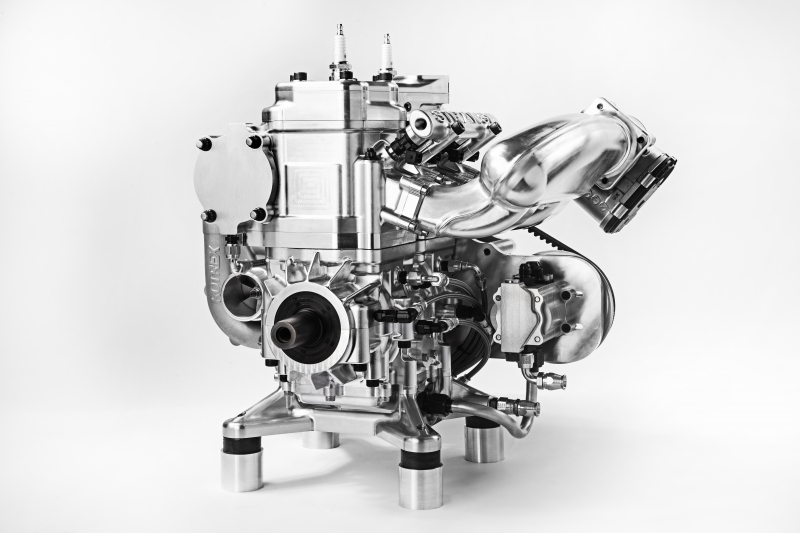
Rotary Exhaust Valves Clean Up Dirty Engines
The goal is creating a high-powered, lightweight and clean two-stroke engine. Achieving that level of engineering elegance for internal combustion requires tailoring engine components to the job at hand. So, while the underlying tech could be adapted for many mobility applications, from UAVs to chainsaws to ATVs, the challenge lies in millimeter changes to fit the parts to the whole operation.
As Krzeminski explains in-depth alongside writer Rory Jackson for Unmanned System Technology, the REVolution engine uses a supercharger to keep high-pressure air directly in the engine’s cylinder and then the REV selectively closes or opens the exhaust port. Put simply, exhaust is waste — the heat and emissions are lost energy — so the supercharger gives a lot of oomph and the valve stops the engine from losing more than it has to. The goal is to meet higher emissions standards and keep the same performance.
The first step toward that is creating a test bed.
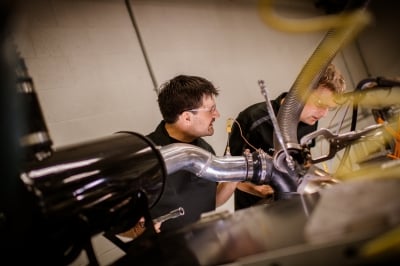
APS LABS Tests Automotive Innovations
APS LABS is known for bridging the gaps between internal combustion (IC) engines, alternative fuels, electric propulsion, autonomous vehicles and connected technologies. Because automobile engineers are good at their jobs, many consumers aren’t aware of the subtle evolutions and technology shifts under their car hoods. While some people may think it’s a zero-sum choice between clean electric and dirty ICs, there is a lot more to consider in terms of environmental impact and practical use. What Worm finds most promising about the REVolution project is its blended approach to combustion and electrification.
“I hope there is a pendulum. I hope as a society, we see that there is not one size fits all, so we still need to develop combustion technologies,” Worm said.
The blended REVolution engine can’t be tested on a regular dynamometer, or dyno, which measures an engine’s force, torque or power. Instead, the team had to use a motor from an electric vehicle as a sort of dyno to mimic the engine cycles a dyno would push a test engine through. The team working on the project includes staff research engineers Joel Duncan, Tucker Alsup and Paul Dice from APS LABS.
The test setup takes the electric motor and its power electronics, then ties the setup to the power grid, enabling infinite supply or absorption of direct current (DC) power. That allows for repeatable and extended testing sessions. The setup enables not only testing and development of the engine technology, but also mimics a range extender, which helps electric vehicles go farther after they run out of juice.
Now that the test bed is ready and meets baseline standards, the next steps are to put the REVolution engine through its paces.
Michigan Technological University is an R1 public research university founded in 1885 in Houghton, and is home to nearly 7,500 students from more than 60 countries around the world. Consistently ranked among the best universities in the country for return on investment, Michigan's flagship technological university offers more than 185 undergraduate and graduate degree programs in science and technology, engineering, computing, forestry, business, health professions, humanities, mathematics, social sciences, and the arts. The rural campus is situated just miles from Lake Superior in Michigan's Upper Peninsula, offering year-round opportunities for outdoor adventure.
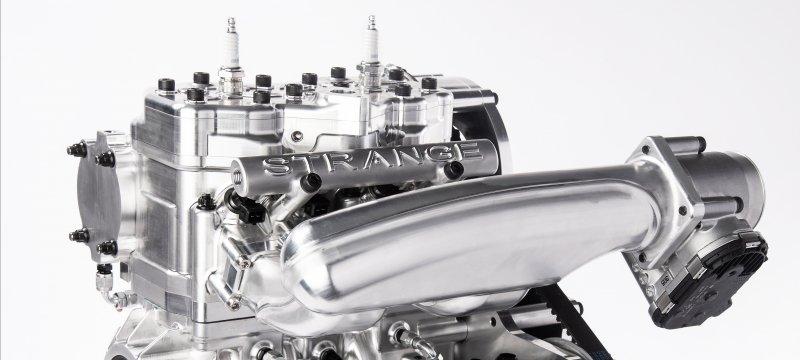
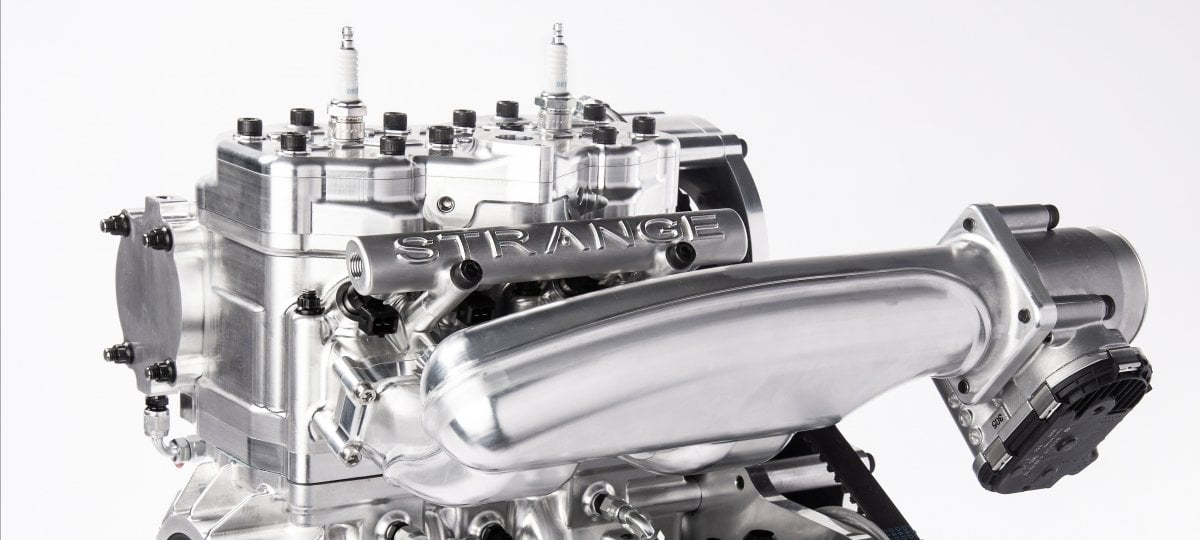



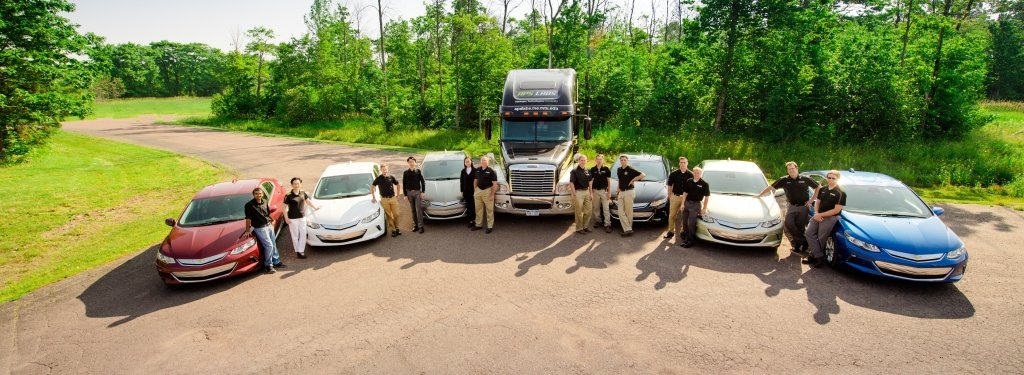

Comments